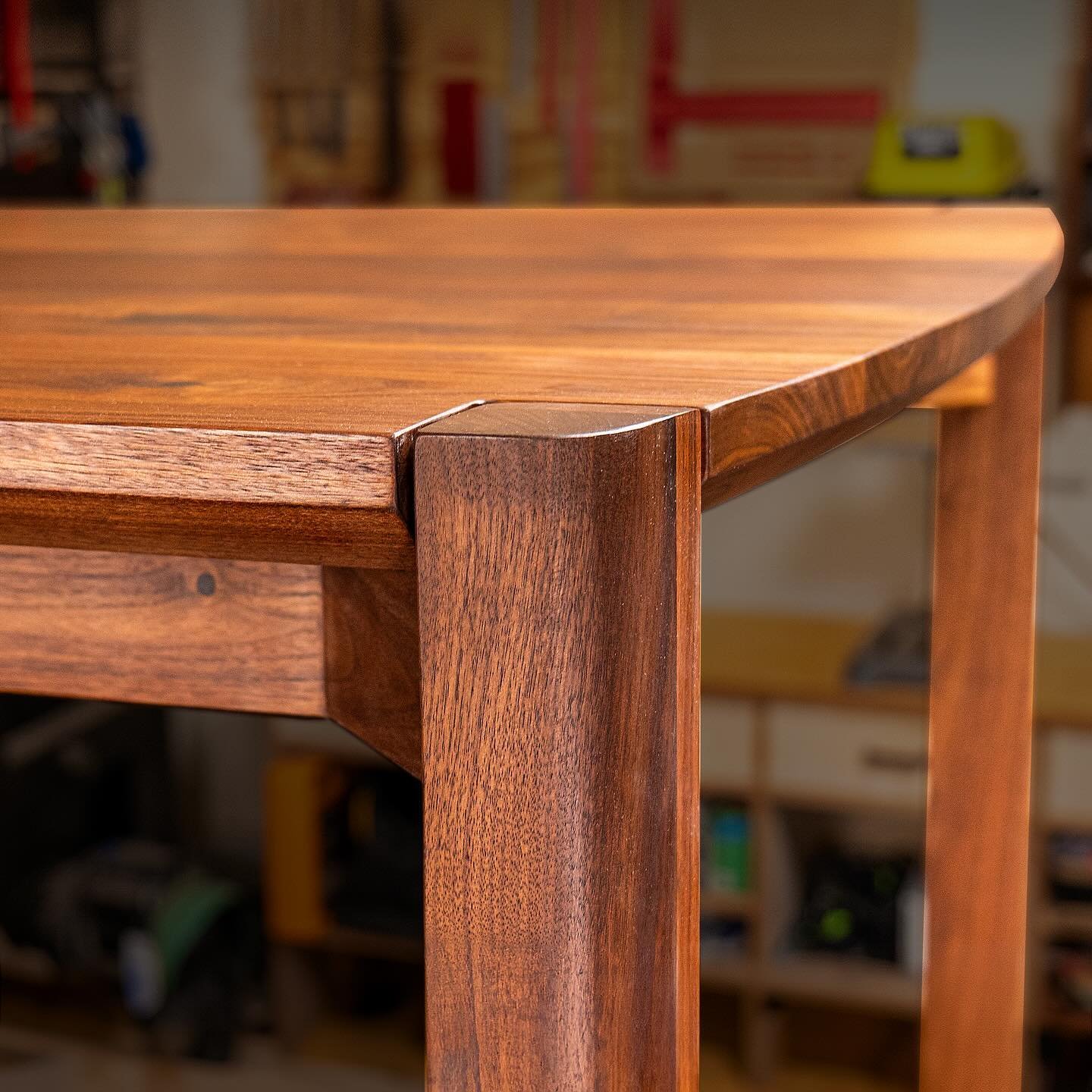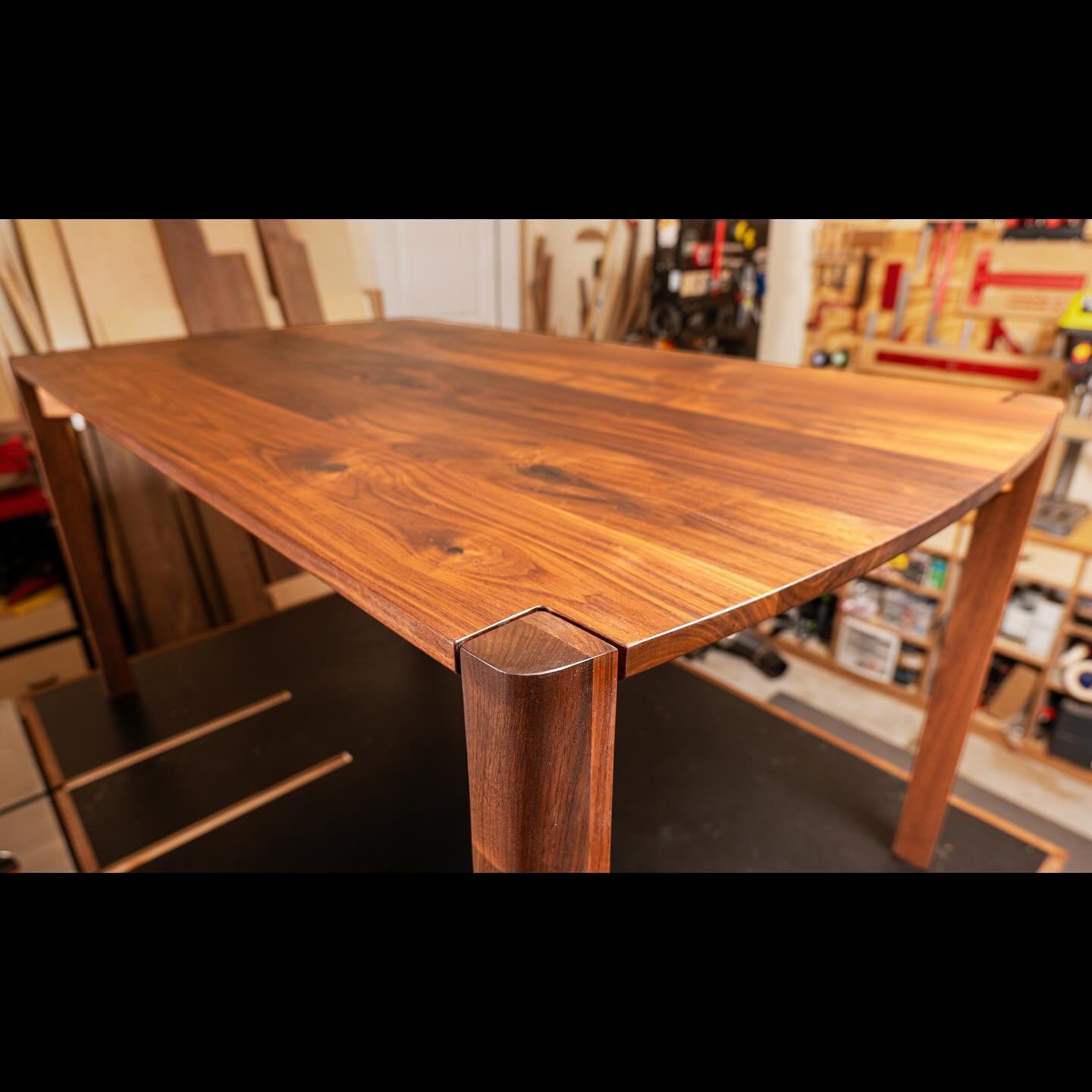Building a Dining Table - The Heart of a Home
In a world marked by hustle and bustle, the dining table remains a steadfast anchor, grounding us in the rhythm of our daily lives. It's more than just a surface for chopping vegetables or a gathering place for family meals; it's the beating heart of a home. It's where morning coffee rituals unfold, children complete their homework, and friends linger after a hearty meal. The kitchen table transcends its utilitarian purpose, evolving into a shared space where relationships are nurtured and connections are strengthened.
So, let’s talk about the steps involved, from the first strokes of design inspiration to applying the last bit of finish, and explore the world of craftsmanship and the profound joy that comes with creating something meaningful for the spaces we call home.
Designing a Dining Table
The modern ethos has been a guiding force in my quest for inspiration. Clean lines, minimalist aesthetics, and a harmonious blend of form and function have been pivotal. I envisioned a table that would seamlessly integrate into contemporary living spaces while providing a cozy, communal atmosphere. The clean slate that a modern design provides allows for both timeless elegance and adaptability to diverse interior styles.
In keeping with this modern style, I wanted the table top to appear to be floating. To achieve this, I designed the table legs to go through the top of the table, exposing the end grain. This allows for the table legs to extend past the threshold of the table top and reinforces the elegance of the profile.
Size Matters
Determining the right size was a dance between functionality and intimacy. A four to six-person capacity strikes the perfect balance, ensuring a cozy setting for family meals or an intimate gathering of friends. The dimensions aim to foster connection without sacrificing individual space, making every meal an opportunity for shared experiences.
When it comes to choosing the right size for a 4-person table, there are a few things to consider. First, you'll need to decide how much space you have available. If you have a small dining room, you'll need to choose a table that is compact enough to fit comfortably. However, you also don't want the table to be so small that people feel cramped.
Another important factor to consider is the size of your chairs. If you have large chairs, you'll need a larger table to accommodate them. Conversely, you can get away with a smaller table if you have small chairs.
Finally, you'll need to decide how much clearance you want around the table. A good rule of thumb is to allow at least three feet of clearance on all sides of the table. This will give people enough room to comfortably get in and out of their chairs.
Once you've considered all these factors, you can start narrowing down your choices. Here are a few dimensions to keep in mind for a 4-person table:
Width: 36 - 40 inches
Depth: 48 - 62 inches
Height: 28 - 30 inches
These dimensions will provide a comfortable amount of space for four people to sit and eat. If you have a larger dining room, you can opt for a larger table; however, if you have a small dining room, build a smaller table.
No matter what size table you choose, make sure it is proportional to the size of your chairs. A large table with small chairs will look out of place, and a small table with large chairs will be uncomfortable to eat at.
With a bit of planning, you can choose the perfect size table for your dining room. A well-chosen table will make mealtime more enjoyable for you and your guests.
Wood Choice: Walnut, a Timeless Elegance
Selecting walnut as the primary wood was a deliberate choice. Beyond being my favorite species of wood, walnut exudes warmth and sophistication, making it a timeless choice for furniture. The rich, dark hues and swirling grain patterns add character, turning the table into a statement piece. Additionally, the durability of walnut ensures that the table will age gracefully, developing a patina that tells the story of shared meals and gatherings.
The Importance of Quality Materials
Crafting a table that withstands the test of time demands a commitment to quality materials. Every inch of this table, from the tabletop to the legs, is a testament to the importance of selecting wood with integrity. Walnut's robust nature ensures not only a stunning visual appeal but also a sturdy and resilient foundation. The attention to detail in selecting and treating each piece of wood guarantees a durable and functional table that becomes an enduring centerpiece in the heart of the home.
In the workshop, where creativity and craftsmanship converge, this design inspiration translates into a labor of love — a modern walnut kitchen table that embodies the essence of thoughtful design, inviting gatherings, and the enduring beauty of handcrafted furniture.
Joinery for Kitchen Tables
Dominos: Not Just for Games
The table's soul lies in its tabletop; achieving a seamless, robust connection is paramount. Enter the humble but mighty domino joinery. Precise mortises, cut with the accuracy afforded by a Festool Domino, create pockets for floating tenons. These tenons fit snugly into the mortises, forming a bond that is as strong as it is visually unobtrusive.
The advantage of domino joinery lies in its efficiency and accuracy. The alignment provided by the machine ensures a level surface while the strength of the joint is unmatched. This method expedites the construction process and ensures a tabletop that stands the test of time, resisting warping or shifting.
Birdsmouth Joints: A Marriage of Form and Function
As we descend to the foundation of the table, where the legs meet the base, the choice of joinery transitions to the elegant birdsmouth joint. This joint, resembling the angles of a bird's beak, creates a secure and visually pleasing connection between the legs and the base structure.
Crafting birdsmouth joints involves precision in both design and execution. The legs are carefully positioned to interlock with the base, forming a stable and visually cohesive union. This joint contributes to the table's structural integrity and adds a touch of artistry to its aesthetic appeal. The result is a seamless marriage of form and function, where each joint plays a vital role in the overall stability of the table.
Harmonizing Tradition and Innovation
In the woodshop, tradition and innovation go hand in hand. The birdsmouth joint is a classic woodworking technique that has been used for centuries. At the same time, the domino joinery is a newer technique that is gaining popularity due to its precision and strength. When combined, these two techniques create a dining table that is both functional and beautiful. This dining table is a functional masterpiece and a symbol of handcrafted artistry and timeless design. It will be a silent witness to countless gatherings and shared moments for many years to come.





